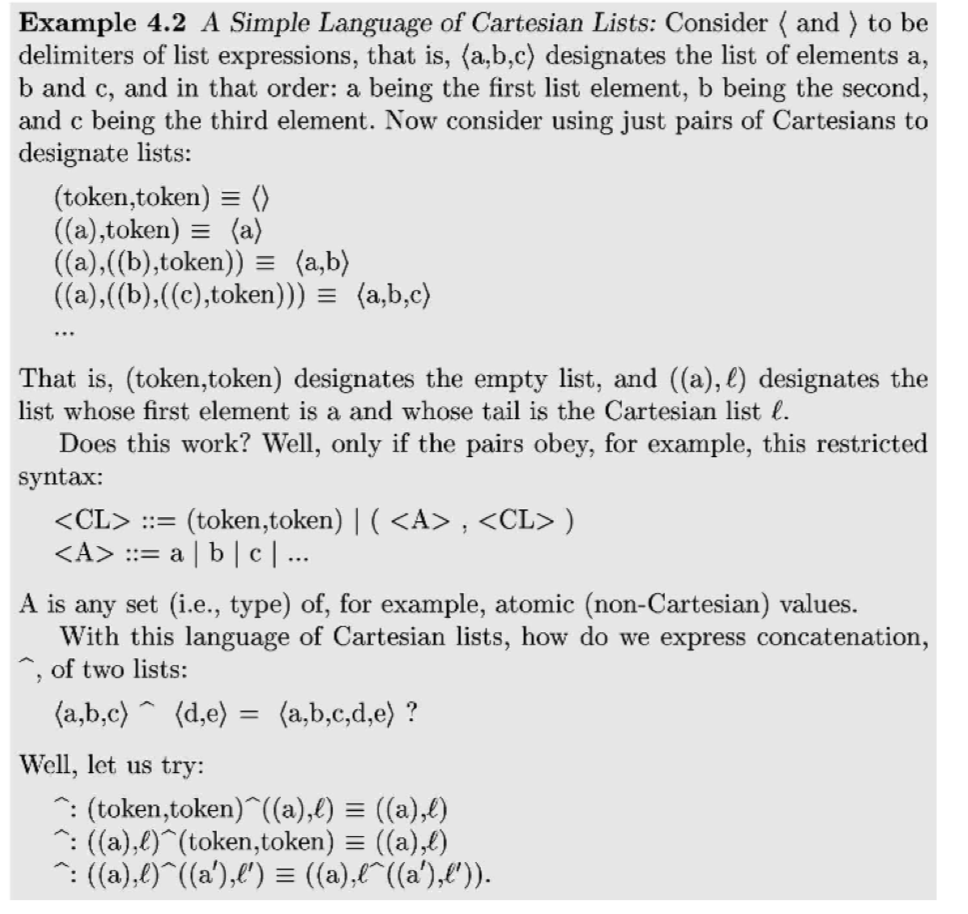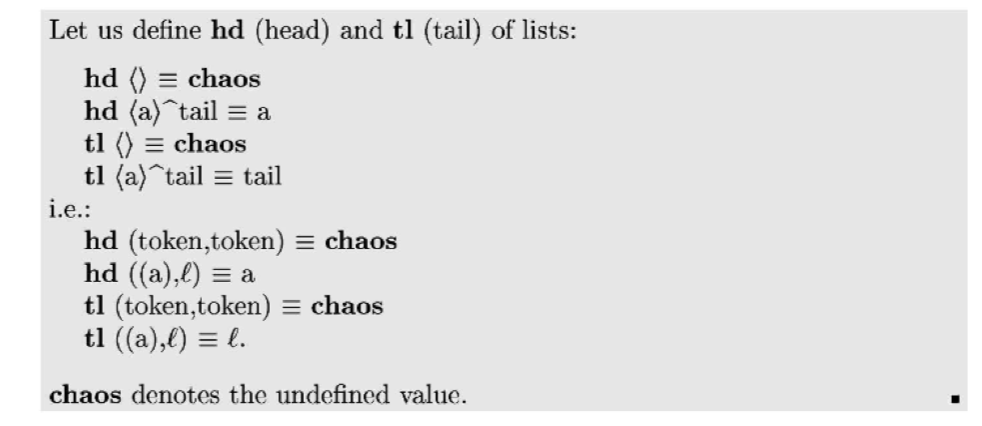Answered step by step
Verified Expert Solution
Question
1 Approved Answer
Further Operations on Cartesian Lists. We refer to Example. Define the following operations on Cartesian lists: (1) length of a list: The number of (zero,
Further Operations on Cartesian Lists. We refer to Example. Define the following operations on Cartesian lists: (1) length of a list: The number of (zero, one or more) elements that it contains. (2) index set (inds) of a list: The set of indices, from 1 to and including the length of the list. If the list is empty then the index set is the empty set. (3) element set (elems) of a list: The set of distinct elements of the list. If the list is empty then the element set is the empty set.


Step by Step Solution
There are 3 Steps involved in it
Step: 1

Get Instant Access to Expert-Tailored Solutions
See step-by-step solutions with expert insights and AI powered tools for academic success
Step: 2

Step: 3

Ace Your Homework with AI
Get the answers you need in no time with our AI-driven, step-by-step assistance
Get Started


